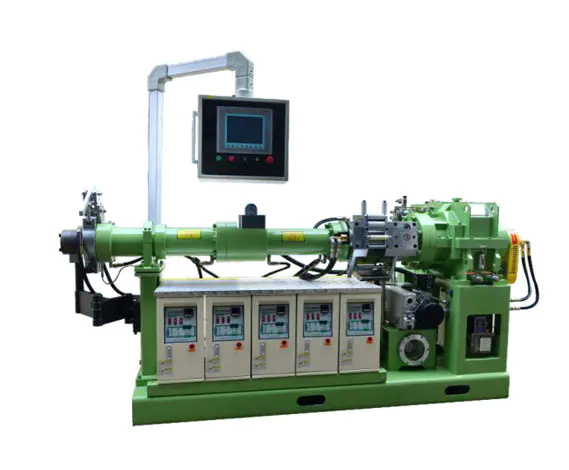What is the main function of an EPDM extruder?
EPDM is renowned for its exceptional resistance to weathering, ozone, and temperature fluctuations, making it a preferred material for automotive seals, construction gaskets, and roofing membranes. The primary function of an EPDM extruder is to consistently and efficiently process this versatile elastomer, shaping it into a continuous, uniform product with a defined cross-section, a process that involves a sophisticated interplay of mechanical force, thermal energy, and precise control.
At its fundamental level, the core mechanical function of an EPDM extruder is to plasticize, convey, and pressurize the material. The process begins when raw, uncured EPDM compound, typically in a strip or pelletized form, is fed into the extruder's hopper. From there, it enters the barrel, where a rotating screw is housed. The design of this screw is paramount; it is often a variant with specific compression ratios and flight depths tailored for EPDM's viscosity and flow properties. As the screw rotates, it mechanically shears and works the compound, generating frictional heat. This action, combined with external heating zones on the barrel, gradually plasticizes the EPDM, transforming it from a solid into a viscous, flowable mass. The geometry of the screw flights then conveys this homogenized material forward, simultaneously building the pressure necessary to force it through the subsequent tooling. This entire process within the EPDM extruder must be carefully managed to ensure a stable and consistent output.

The culmination of the extrusion process occurs at the die, which is the tooling attached to the end of the EPDM extruder. The die is a custom-manufactured component that defines the final shape of the product. As the pressurized, plasticized EPDM is forced through the die's opening, it takes on the desired cross-sectional profile, whether it be a simple solid cord, a complex sponge seal with a hollow core, or a flat sheet. The design of the die is a science in itself, accounting for EPDM's "die swell"—the tendency of the material to expand after exiting the die's confinement. A well-engineered die for an EPDM extruder will precisely compensate for this phenomenon to achieve the exact final dimensions. The smooth, continuous emergence of the shaped rubber from the die represents the successful execution of the EPDM extruder's primary shaping function.
Following the shaping at the die, the extrudate is still in a thermoplastic state and must be vulcanized to develop its final elastic properties. This is a critical stage that differentiates the processing of rubbers like EPDM from that of thermoplastics. Immediately after exiting the EPDM extruder, the continuous profile is directed into a long, heated chamber known as a vulcanizing line, often a salt bath or a continuous vulcanization (CV) tunnel. Here, the material is subjected to controlled high temperatures, which activate the chemical curatives within the EPDM compound. This cross-linking reaction permanently sets the molecular structure, transforming the soft, plastic material into a resilient, durable elastomer. The seamless transition from the EPDM extruder to the vulcanization system is essential for maintaining product consistency and preventing deformation in the unsupported profile.
The operational efficacy of an EPDM extruder is heavily dependent on its supporting systems and precise control mechanisms. Modern extruders are equipped with sophisticated control panels that allow operators to meticulously manage temperature zones along the barrel and die, screw rotation speed (RPM), and feed rates. Since the viscosity of EPDM is sensitive to temperature, maintaining a stable thermal profile is crucial to prevent scorching (premature vulcanization) or inconsistent flow. The drive system that turns the screw must provide consistent torque, especially when processing high-viscosity EPDM compounds for dense seals. Furthermore, an upstream feed system that delivers a consistent and uninterrupted supply of compound to the EPDM extruder is vital for preventing surging or output variations that would compromise the product's dimensional stability.
In application, the versatility of the EPDM extruder is demonstrated across numerous industries. In the automotive sector, it is used to produce door seals, trunk seals, and window channels, where consistent dimensions and a smooth surface are critical for effective sealing and noise reduction. In construction, the machine is indispensable for creating continuous gaskets for glazing and durable membranes for roofing. The specific configuration of an EPDM extruder, including screw design, L/D (length-to-diameter) ratio, and horsepower, is often selected based on the intended application and the specific grade of EPDM being processed. This adaptability makes the EPDM extruder a cornerstone of modern rubber profile manufacturing.






 English
English 中文简体
中文简体 русский
русский



